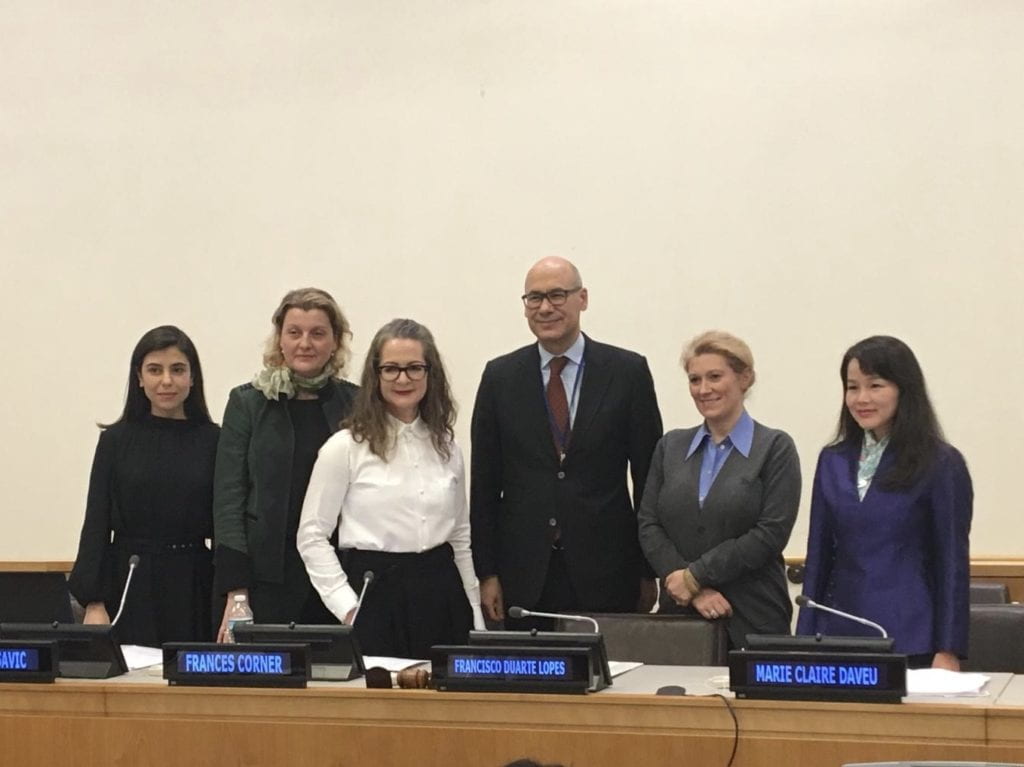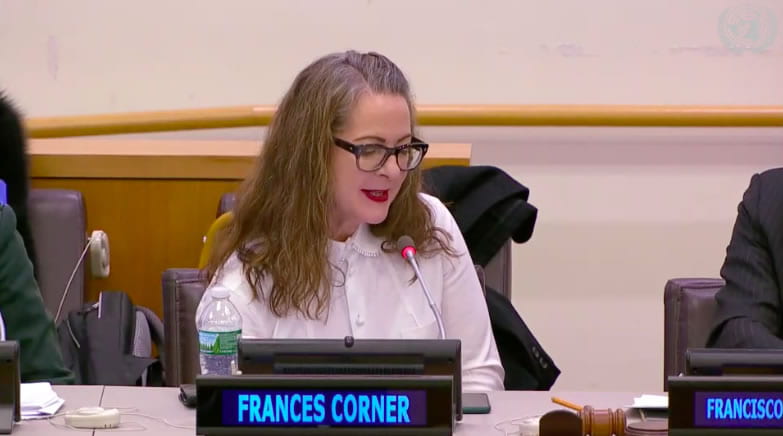On the 11th and 12th February the United Nations headquarters in New York celebrated the International Day of Women and Girls in Science. London College of Fashion and HRH Princess Nisreen organised the panel discussion “The Science of Fashion for Sustainable Development”. To which we invited 4 guests from across the globe to speak with myself. The guests were the wonderful Marie-Claire Daveu – Kerring, Professor Snežana Savić – University of Belgrade, Professor Sun Xuefei – Beijing Institute of Fashion Technology, Ms. Mariana Gatti – Box1824 and moderated by H.E. Ambassador Francisco Duarte Lopes, Permanent Representative of Portugal to the United Nations. The panel aimed to shed light on the role of science, technology, engineering and mathematics skills for fashion and sustainable development programs.

Over the past 25 years, the United Nations (UN) has drawn the attention of the international community to the serious gender gap that affects science such that it has become a priority of many countries and international political institutions. Yet, the advancement of women and girls in science has not only stalled, but has started regressing with a widening of the gender gap in science. Reversing this trend and recognising the rightful role of women in science both as change agent and recipient of support in science will be indispensable in order to achieve the 2030 Agenda for Sustainable Development and its 17 Sustainable Development Goals (SDGs) adopted by all our countries.

Based on research for the Hamilton Project at the Brookings Institute, women are underrepresented throughout the innovation pipeline. Women earn 57 percent of all college degrees, but only 35 percent of science, technology, engineering and mathematics (STEM) degrees. As such, females represent only 22 percent of the STEM workforce and just 16 percent of patent holders. Yet, nothing matters more for progress, strong sustainable economies and quality living standards than innovation.
As we enter the fourth industrial revolution, we are in uncharted waters that offer unprecedented opportunities for wealth creation to those who can help solve the world’s biggest challenges. With the adoption of the 2030 Agenda, for the first time governments, businesses and civil societies are aligned in what the problems are and in committing resources to co-creating attractive markets to address them. Some women, with their deep understanding of the needs and problems of the underserved, are uniquely positioned to help solve them through innovation with purpose. To do so, these women must acquire the problem solving skills usually developed in the scientific disciplines or have access to STEM resources. They will also need productive assets like financial capital, and networks to capitalize on their knowledge and create enterprises to generate wealth.

Female talent pipeline for high-growth sectors and geographies should be the main investment target to attain the most effective returns that help achieve the SDGs. The United Nations and World Bank have proven that investing in women is smart economics and can help accelerate sustainable development since women more than men reinvest their earning in their families and communities. They also tend to create business and innovate with purpose.
In addition, interventions, policy tools and focused programs are needed to shift both public and private sectors’ priorities, investments, perceptions on women’s and girls’ place in Science, Technology and Innovation (STI.) Practical measures that directly respond to barriers that hinder women’s and girls’ success must be instituted. Best practices and innovative solutions are highly welcomed.

Fashion embodies human pleasure, creativity, social codes and technologies that have enabled societies to prosper, laid burdens on the environment and caused competition for arable land. No single actor, action nor technology is sufficient to shift us away from the environmental and social challenges embedded in the fashion industry – nor to meet the demands for sustainable development of society at large. However, scientific and technological developments are important for progress towards sustainable fashion.




